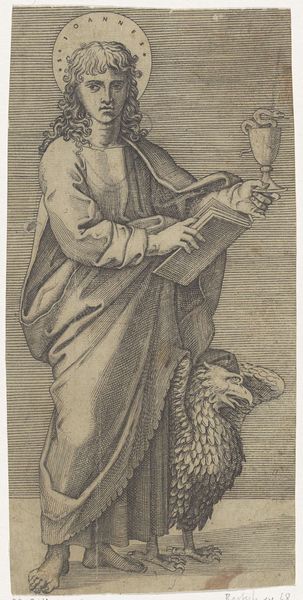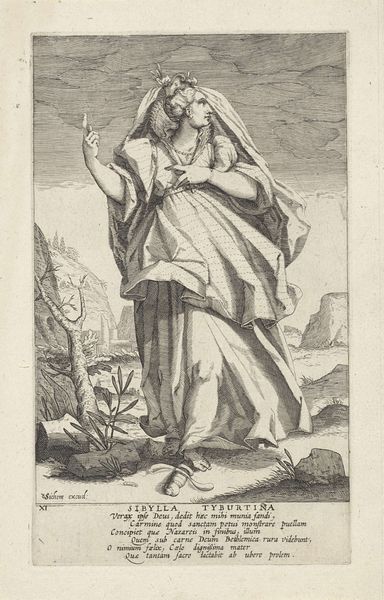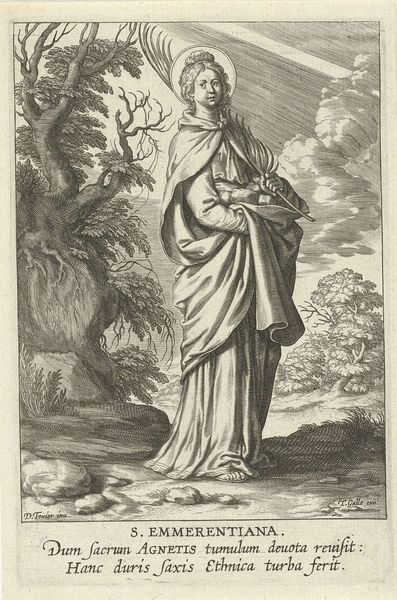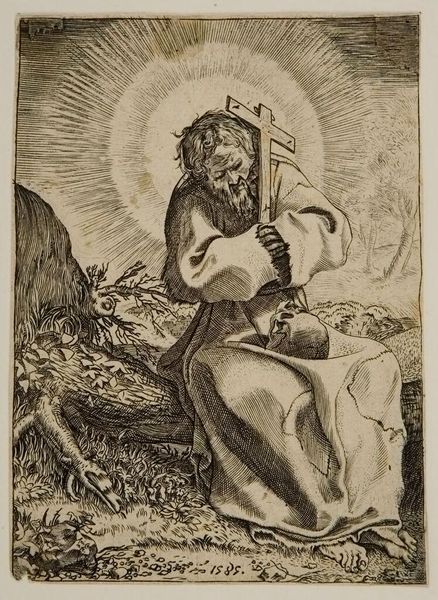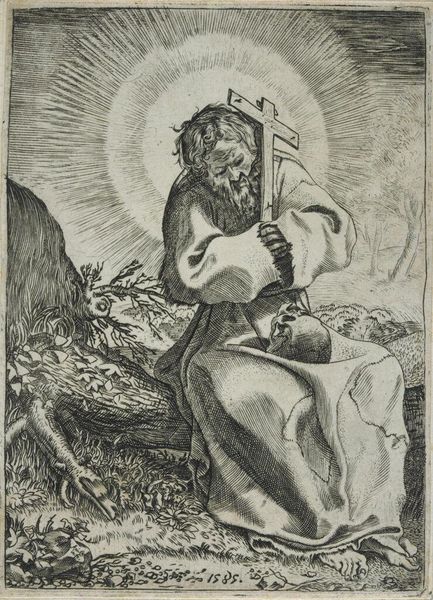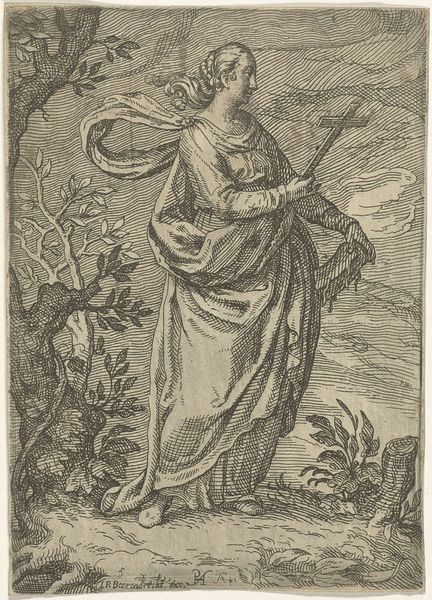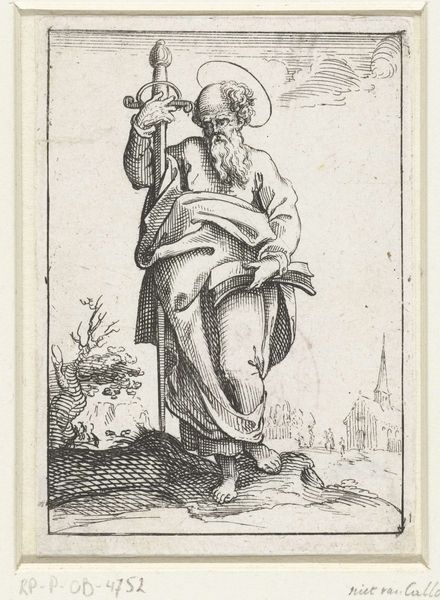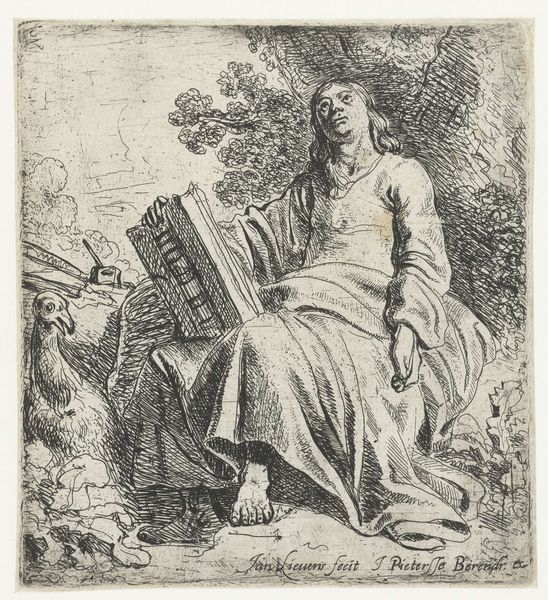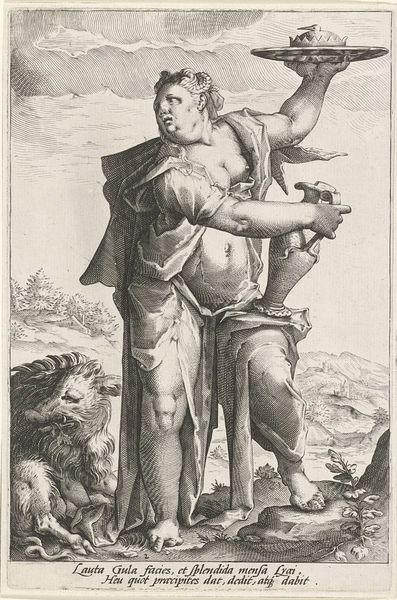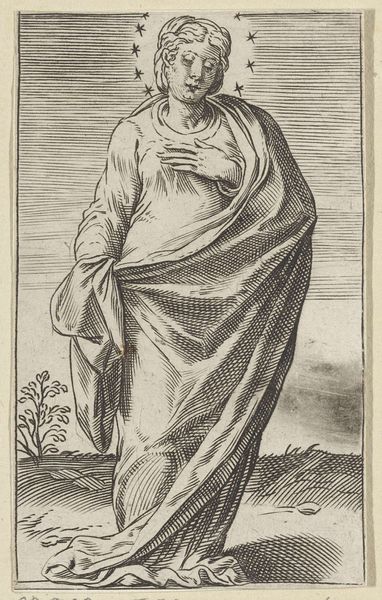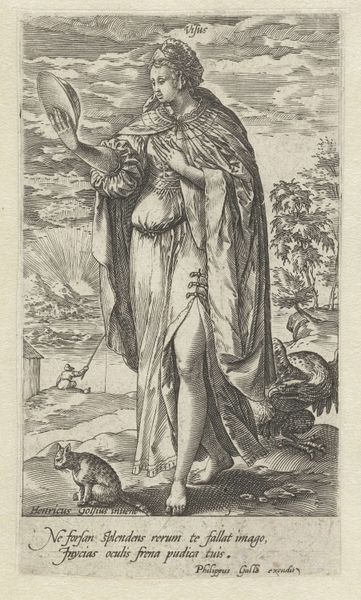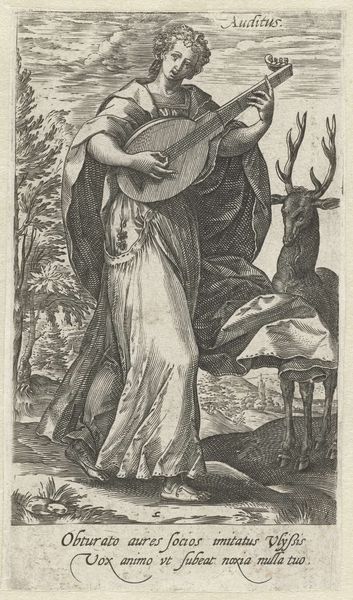
print, intaglio, pen, engraving
#
portrait
#
medieval
#
allegory
# print
#
pen illustration
#
pen sketch
#
intaglio
#
old engraving style
#
landscape
#
figuration
#
11_renaissance
#
pen-ink sketch
#
line
#
pen work
#
pen
#
history-painting
#
engraving
Dimensions: height 298 mm, width 205 mm
Copyright: Rijks Museum: Open Domain
Curator: Hieronymus Cock's engraving, "Musica," created in 1551 and residing here at the Rijksmuseum, presents us with an intriguing allegorical representation. Editor: The sheer detail achieved through the intaglio technique is remarkable! There’s an immediate impression of grace and yet… almost unsettling stillness, don't you think? The precise lines give it a certain emotional austerity. Curator: Precisely. Considering its historical context, music held immense power. It was seen as a force influencing not only human emotions, but also the very order of the cosmos. Musica as a personified virtue represented harmony, something deeply intertwined with social and political ideologies of the time. We also have to read its cultural context—renaissance scholars believed that musical harmony reflected the order of the universe. Editor: The figure certainly dominates the composition. And beneath her we see strewn instruments—a violin-like instrument and a harp along with sheet music—are not merely decorative, but essential to decoding Cock’s structure. They speak of a semiotic framework deeply embedded within this work. The placement creates visual depth and weight. Curator: Indeed! Consider also that women and music had a charged connection during the Renaissance. Musical skill could elevate a woman's status, yet also subject her to scrutiny if seen as overly ambitious or disruptive to societal norms. Editor: The landscape in the background, with its winding river and distant mountains, seems almost detached from the central figure. The landscape offers balance and contrasts with the foreground’s precise linework on musical themes and characters. Curator: A critical tension, mirroring the role of music itself – both integrated within society and standing apart as a transformative force. In terms of its place at the Rijksmuseum, that reflects its importance for education purposes in The Netherlands from an earlier period to understand music's role throughout Western culture! Editor: It gives pause and consideration beyond just the sensory! Curator: Exactly—a cultural lens refracting power structures via art—allowing voices, ideas and values to be challenged in our era and times.
Comments
No comments
Be the first to comment and join the conversation on the ultimate creative platform.

